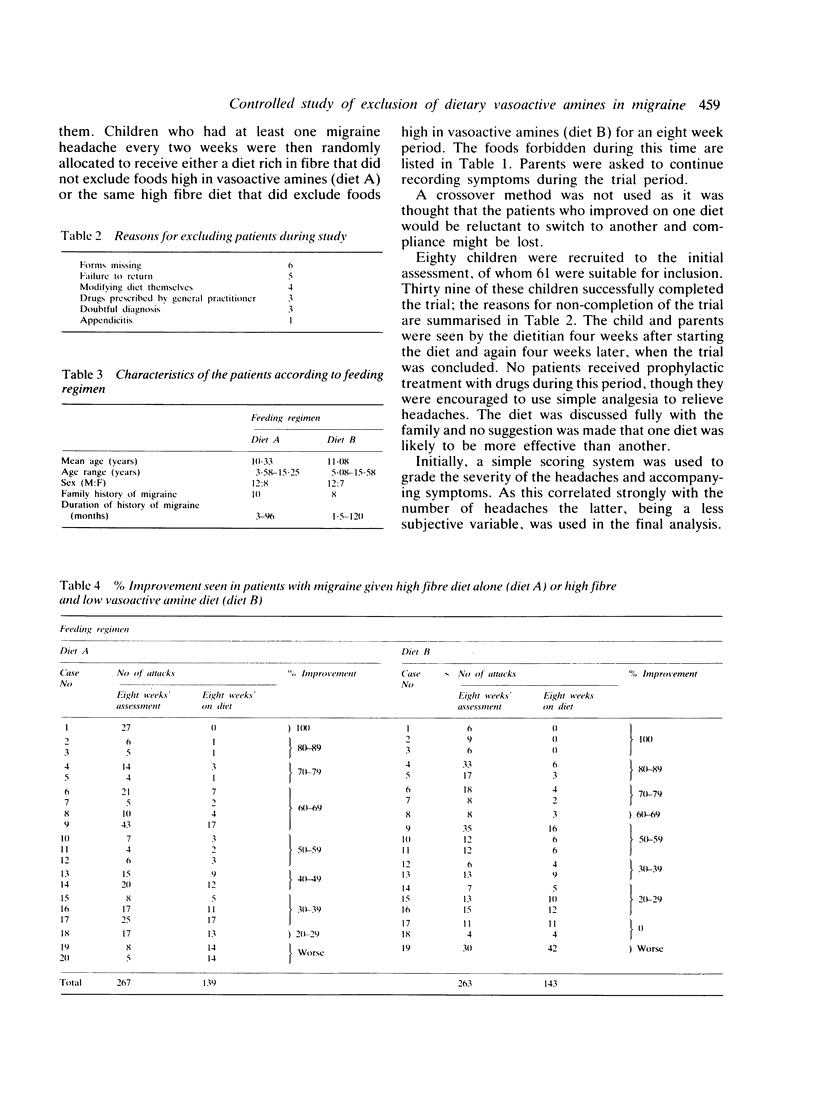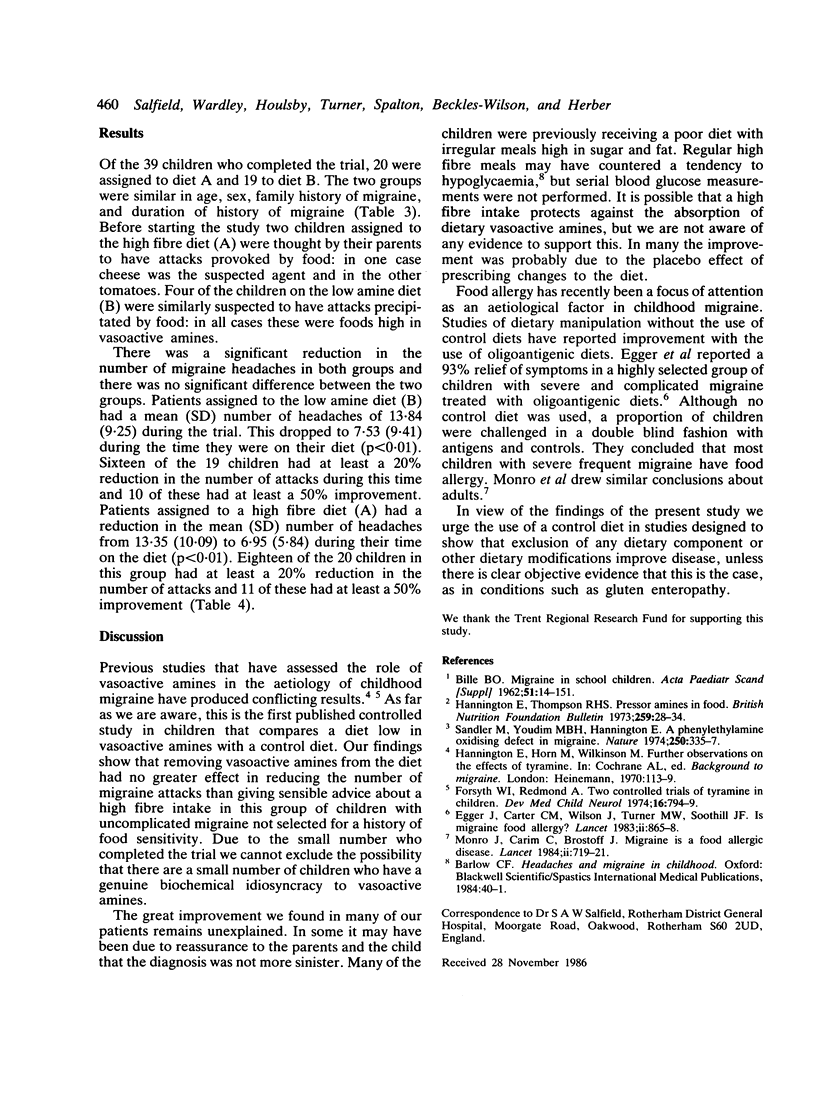Abstract
To assess the effects of dietary vasoactive amines in the aetiology of childhood migraine, 39 children were randomly allocated to either a high fibre diet low in these substances or a high fibre diet alone. Both groups of children showed a significant decrease in the number of headaches and there was no significant difference between the two groups. Dietary vasoactive amines have not been shown in this study to influence childhood migraine. The improvement seen in both groups emphasises the need for a control diet in studies designed to show that dietary manipulation improves disease.
Full text
PDF


Selected References
These references are in PubMed. This may not be the complete list of references from this article.
- BILLE B. S. Migraine in school children. A study of the incidence and short-term prognosis, and a clinical, psychological and electroencephalographic comparison between children with migraine and matched controls. Acta Paediatr Suppl. 1962 May;136:1–151. [PubMed] [Google Scholar]
- Egger J., Carter C. M., Wilson J., Turner M. W., Soothill J. F. Is migraine food allergy? A double-blind controlled trial of oligoantigenic diet treatment. Lancet. 1983 Oct 15;2(8355):865–869. doi: 10.1016/s0140-6736(83)90866-8. [DOI] [PubMed] [Google Scholar]
- Forsythe W. I., Redmond A. Two controlled trials of tyramine in children with migraine. Dev Med Child Neurol. 1974 Dec;16(6):794–799. doi: 10.1111/j.1469-8749.1974.tb03400.x. [DOI] [PubMed] [Google Scholar]
- Monro J., Carini C., Brostoff J. Migraine is a food-allergic disease. Lancet. 1984 Sep 29;2(8405):719–721. doi: 10.1016/s0140-6736(84)92626-6. [DOI] [PubMed] [Google Scholar]
- Sandler M., Youdim M. B., Hanington E. A phenylethylamine oxidising defect in migraine. Nature. 1974 Jul 26;250(464):335–337. doi: 10.1038/250335a0. [DOI] [PubMed] [Google Scholar]


